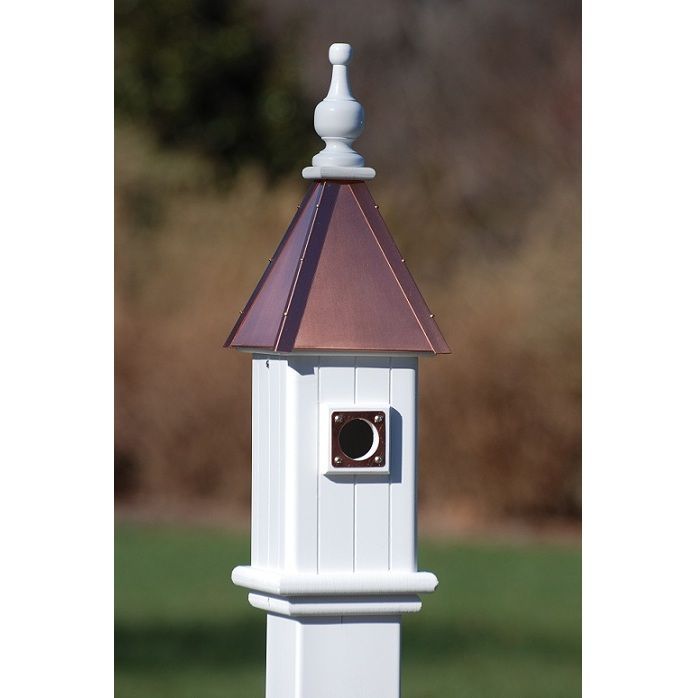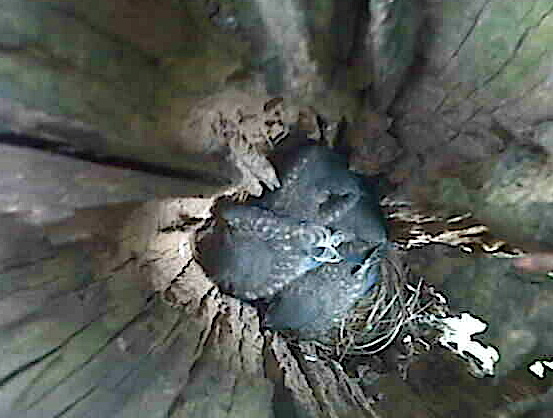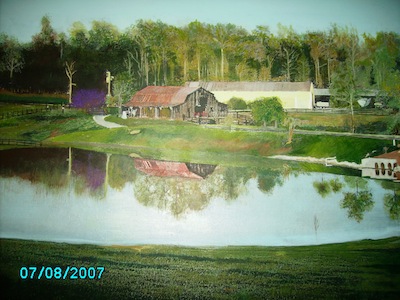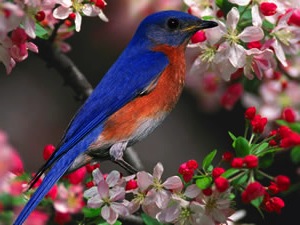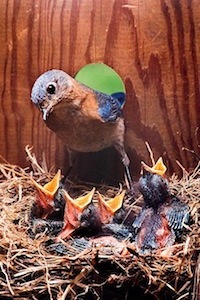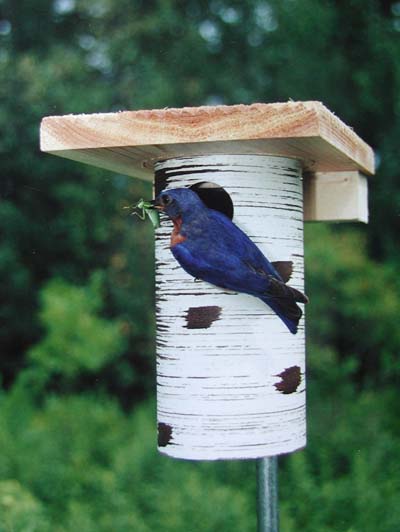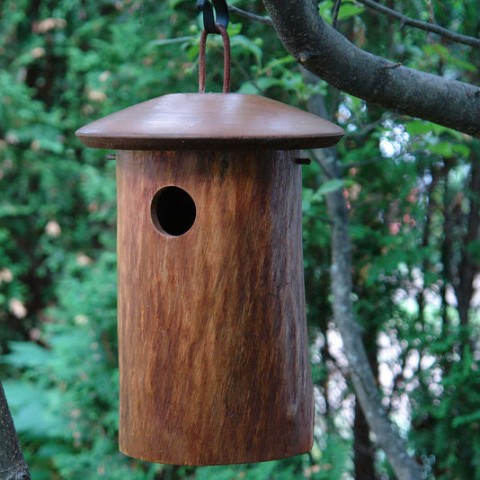-
Attracting the right birds takes research (pertaining to bluebird houses)
This letter to the editor appeared in The Journal Gazette, Fort Wayne, IN., a few days ago. We thought it might be of interest to those who are newer to backyard birding and so fascinated with all their feathered visitors. Because all songs are not always good ones, we believed this post was in order, especially when adding bluebird houses around your yard.
“Attracting the right birds takes research, effort
Eight years ago, when my husband and I moved to the Spencerville-Leo country area, I decided to put out a birdhouse. Soon our birdhouse was occupied by a pair of bluebirds and five blue eggs. I thought how easy and why was attracting bluebirds thought to be such a hard task? Unfortunately, I discovered the answer. The main problems for bluebirds are house sparrows.
House sparrows are extremely destructive to American species of birds. House sparrows make a point of taking over nesting sites. Sparrows often and viciously take over nesting boxes inhabited by our American species. They trap adult birds in their nesting boxes and kill adult birds by pecking the skulls. Sadly, sparrows most notoriously attack the baby birds also. Sadly, in one summer I have lost as many as 11 bluebirds, mostly attributable to the sparrow and another non-native American bird, the starling.
If you are thinking about feeding birds or housing birds in your backyard, please be aware of what types of birds you bring into your area. Monitor your nesting boxes often to make sure you are attracting the birds you desire.
Now I feel like I’m starting over attracting bluebirds, but they are well worth the effort. As for my personal opinion toward house sparrows, they are nothing but trouble.
LAURA McCANN Spencerville”
Not all sparrows are bad, so it’s best to familiarize yourself with their identification by their song and plumage. Simply do a search for the ill-willed, non-native bird, and images with tons of resources will appear. Note the differences in male, female and juvenile birds as well. If you are serious about attracting bluebirds to your place, this information will serve you and the birds very well!
-
blue bird houses with no roof!
We have a gazillion birds around the farm in North Georgia, a bald eagle was even spotted last year. A loud ruckus with crows dive-bombing it in order to block the eagles’ access to their nest. Unfortunately much of the population is house sparrows, who compete (fiercely) with native songbirds for nesting cavities.
You won’t find any blue bird birdhouses around the farm, or any birdhouses for that matter, but there’s certainly no shortage of nest sites and activity! Between the swallows and house sparrows around the three barns, and mockingbirds’ thick-stick nests in the crepe myrtles out front, that leaves about 400 acres of pure, natural habitat. Oh, and the heron, he loves to fly out of the ditch when folks are trail riding in the back. It spooks the horses every time… and he knows this (little fart!) A person could literally get a great start their bird list right here!
With some of the old wooden fencing still intact, the posts have deteriorated over time, and these bluebird chicks seem perfectly at home in one of those posts. If you catch the angle of that photo, you can see it was taken from above… No roof! What if it rains, and what about storms? We were like nervous mothers with concern for the babies. But a moms’ instinct is usually right on… four nestlings, and four successful fledges! You know, it did rain and it did storm on those babies, so I guess natural bird houses with no roof work too!
But I still wouldn’t recommend it!
It really wouldn’t behoove any of the birds to install nest boxes due to the sheer numbers of house sparrows on the property. There would be more fatalities than fledges as far as bluebirds, and we don’t need to encourage the house sparrows! In most of suburbia there is indeed a shortage of natural nest cavities. No rotted fence posts, very few dead trees, and less of the mature (we’re talking like one hundred year old) trees. Birdhouses really do help cavity-dwellers thrive and flourish. Are there some do’s and don’ts? Sure, but one only learns by doing, and everyone who accommodates and enjoys backyard birds started somewhere.
I did a painting of “the back 40” a few years ago, showing the old hay barn and shop. Tons of natural nest cavities and bird activity around this place!
-
It’s time to prep bluebird houses for nesting!
Although some days it doesn’t feel like it, spring is just about here. Buds forming on trees are beginning to unfold, while spring bulbs continue sprouting their deep green foliage. In the Southeast, many bluebirds never left for the winter. With accommodations like ours… why would they? Several heated baths and live mealworms fed daily are a pretty good gig for them.
Nest one spotted in the Gilbertson yesterday, and lots of wing-tipping and clamoring over other bluebird houses on the property. This is a good sign that actual egg-laying isn’t too far off. The wing-tipping is a hoot to watch, it’s the male who does this to attract a mate. Each time he waves a wing as if to say “hey… look at me over here, and look at this great nest box!”
Prior to winter, pine shavings were added to all birdhouses around the property. Providing warmth and a decent roost for cold nights and wet freezing days too – the shavings were removed two weeks ago. Each house was inspected for breakage, cracks and squirrel damage. Two metal portals were added to entrances where squirrels had enlarged the hole to gain access. Little boogers even got their own house last fall! Many times you can salvage bluebird houses or any birdhouse where squirrels have chewed the entrance. As long as the damage isn’t too far gone, a metal predator guard, or portal may be attached over the hole.
Typically bluebirds may have two to three broods per season. If conditions are perfect (habitat and weather) you may even see four broods from the same parents! But it’s always the second brood that’s most enjoyable to watch. Juveniles instinctively help raise fledgelings, teaching them where the food is and even helping to feed them. Talk about family ties!
Most bluebird houses are North American Bluebird Society Approved (NABS) will be wood, recycled plastic or vinyl. Other materials are used, but these houses usually are not “approved”. That’s not to say they can’t host a successful brood… just maybe not the best choice? Of most importance, is the distance from the entrance to the floor. If not at least five to six inches, predators may find easy targets. Since many Eastern bluebirds use pine straw to build nests, this raises the chicks even closer to the entrance, so distance is best here. Open space is another prerequisite for hosting bluebirds. Due to their nature of hunting insects, low grasses and natural perches are favored. And of course, the fresh water. A birdbath of any kind will entice bluebirds and others to your place in no time!
Should you decide to try offering live meal worms this year, there’s a simple supplement to greatly help females with the egg-laying process. Calcium carbonate will help prevent egg binding. A situation that’s usually fatal, it can happen if too many worms are consumed, as they are calcium-depleting. For some reason, the egg does not pass through the duct properly, it gets stuck, resulting in probable death. You can still offer worms, just not too many at a time, or maybe consider adding the powdered calcium carbonate supplement as a preventative measure.
A few bluebird houses we’ve had success with (from L to R) The Gilbertson, NABS Approved Vinyl House, and the very cool Mango Wood Natural Bluebird House. We can assure, a bluebird would be happy to call any one of these “home sweet home” 🙂

